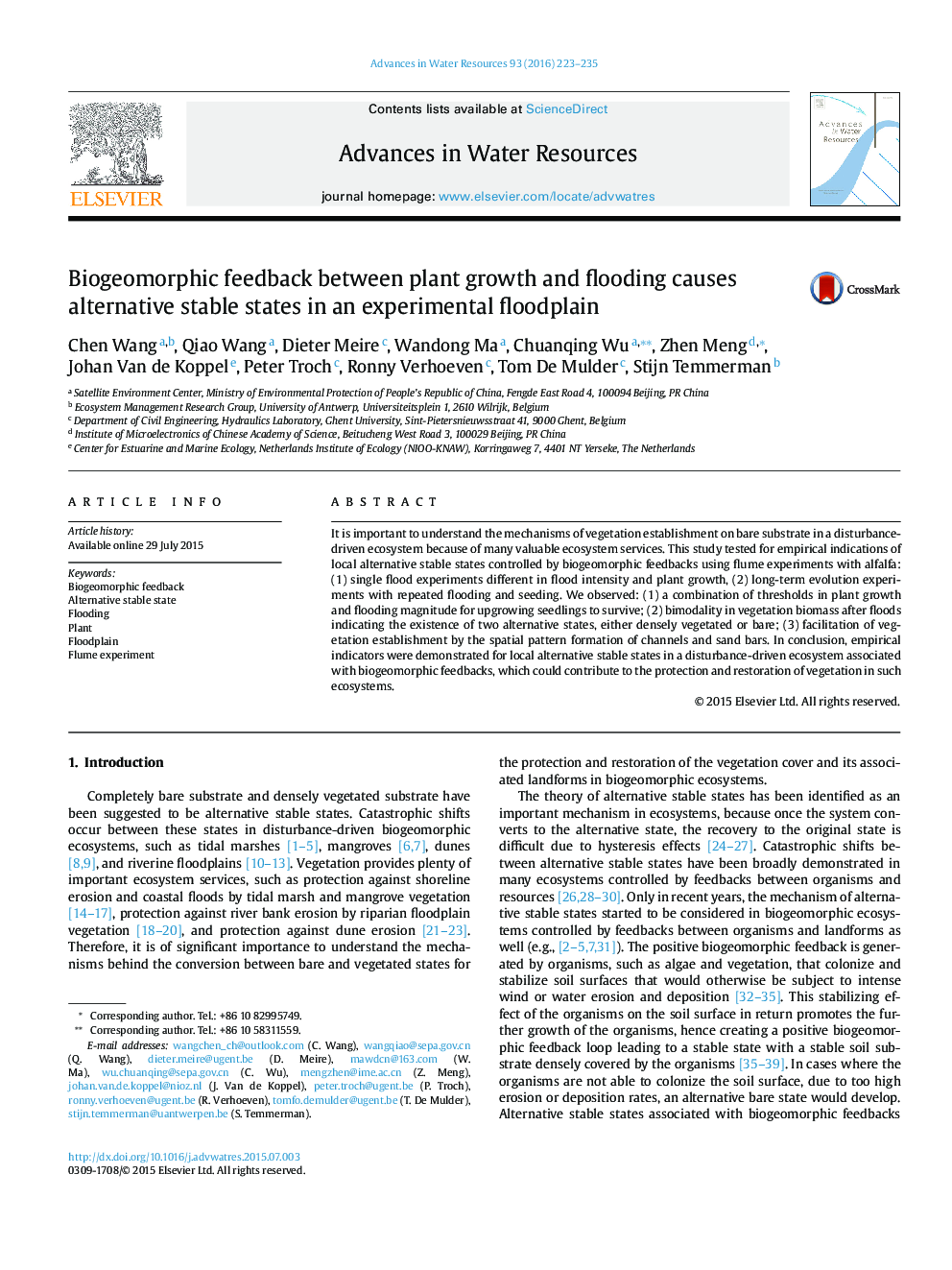| کد مقاله | کد نشریه | سال انتشار | مقاله انگلیسی | نسخه تمام متن |
|---|---|---|---|---|
| 4525233 | 1323744 | 2016 | 13 صفحه PDF | دانلود رایگان |
• We test biogeomorphic alternative stable states by flume experiments with alfalfa.
• Thresholds in plant growth and flooding magnitude determine seedling survival.
• A bimodal distribution of vegetation biomass indicates two alternative states.
• The spatial pattern formation facilitates the establishment of the vegetated state.
• We provide empirical indicators for biogeomorphic alternative stable states.
It is important to understand the mechanisms of vegetation establishment on bare substrate in a disturbance-driven ecosystem because of many valuable ecosystem services. This study tested for empirical indications of local alternative stable states controlled by biogeomorphic feedbacks using flume experiments with alfalfa: (1) single flood experiments different in flood intensity and plant growth, (2) long-term evolution experiments with repeated flooding and seeding. We observed: (1) a combination of thresholds in plant growth and flooding magnitude for upgrowing seedlings to survive; (2) bimodality in vegetation biomass after floods indicating the existence of two alternative states, either densely vegetated or bare; (3) facilitation of vegetation establishment by the spatial pattern formation of channels and sand bars. In conclusion, empirical indicators were demonstrated for local alternative stable states in a disturbance-driven ecosystem associated with biogeomorphic feedbacks, which could contribute to the protection and restoration of vegetation in such ecosystems.
Journal: Advances in Water Resources - Volume 93, Part B, July 2016, Pages 223–235
